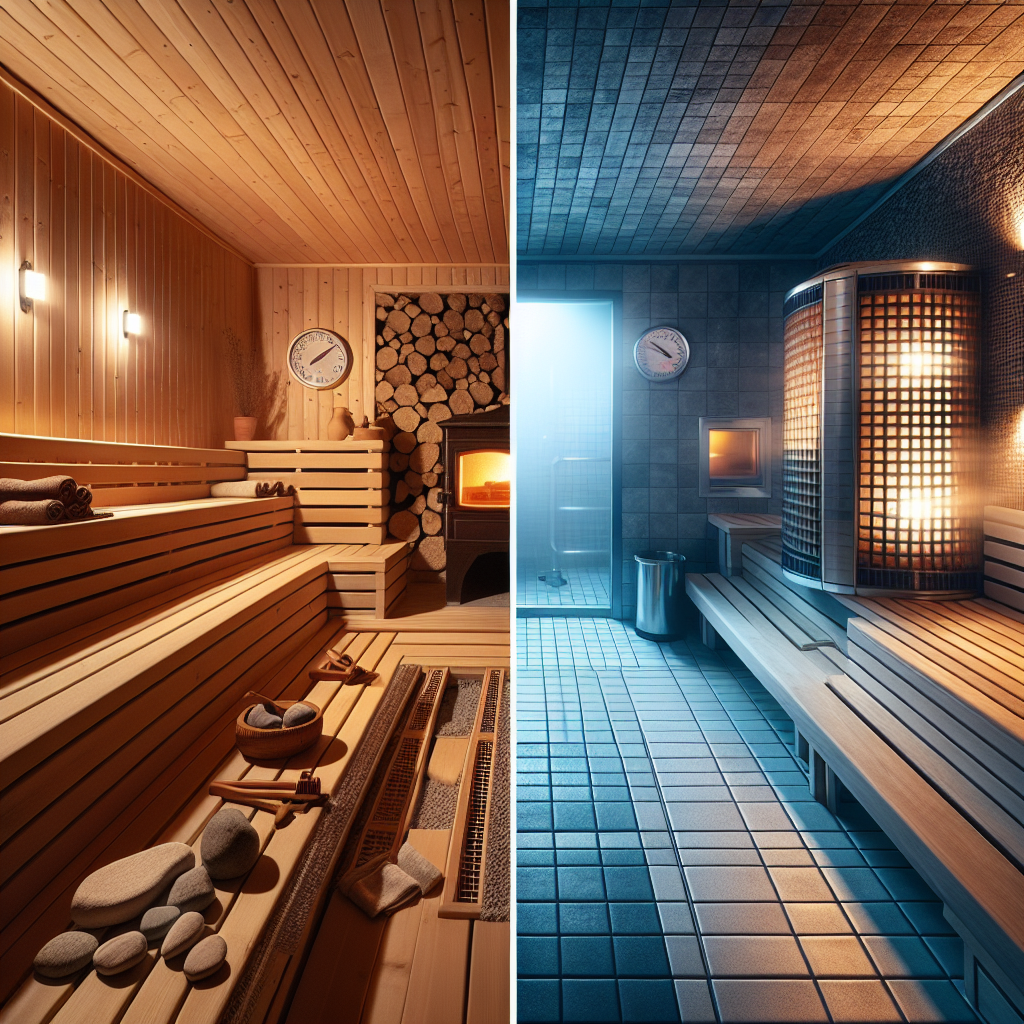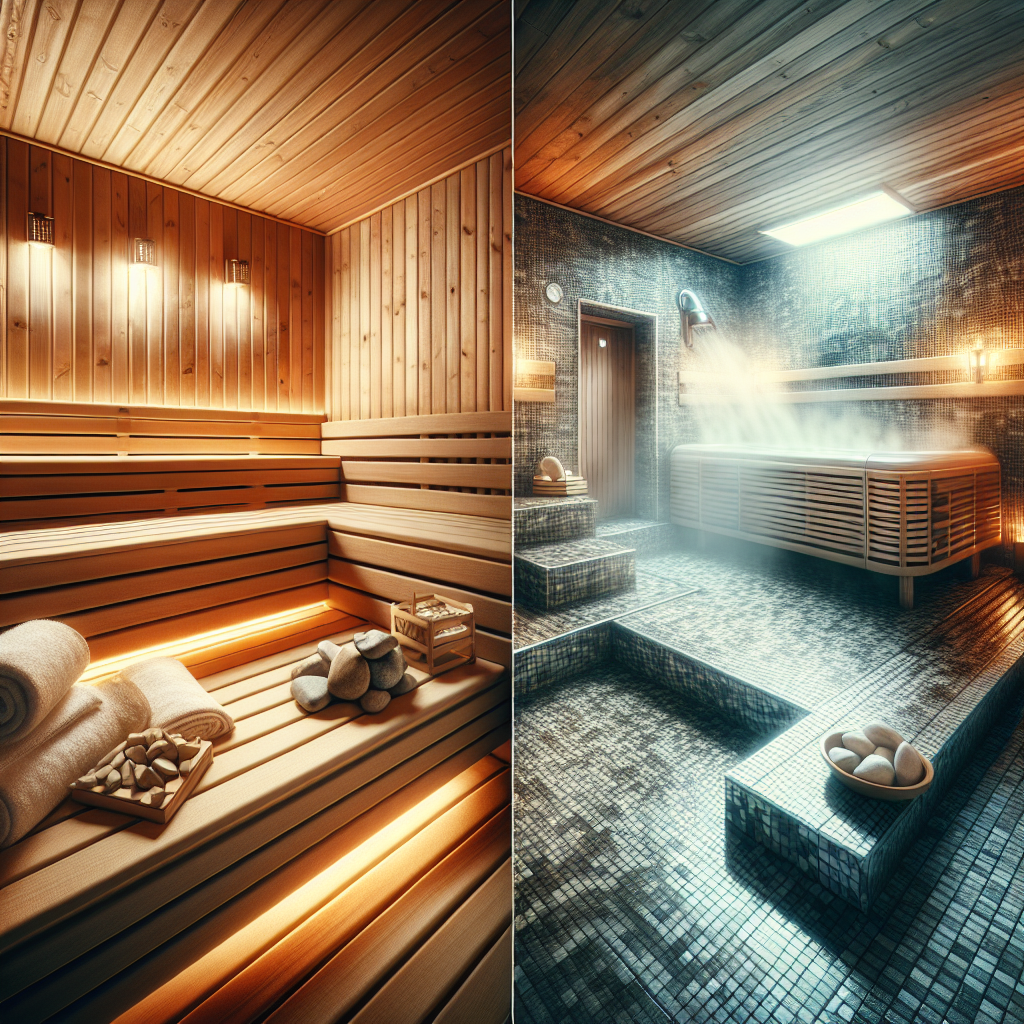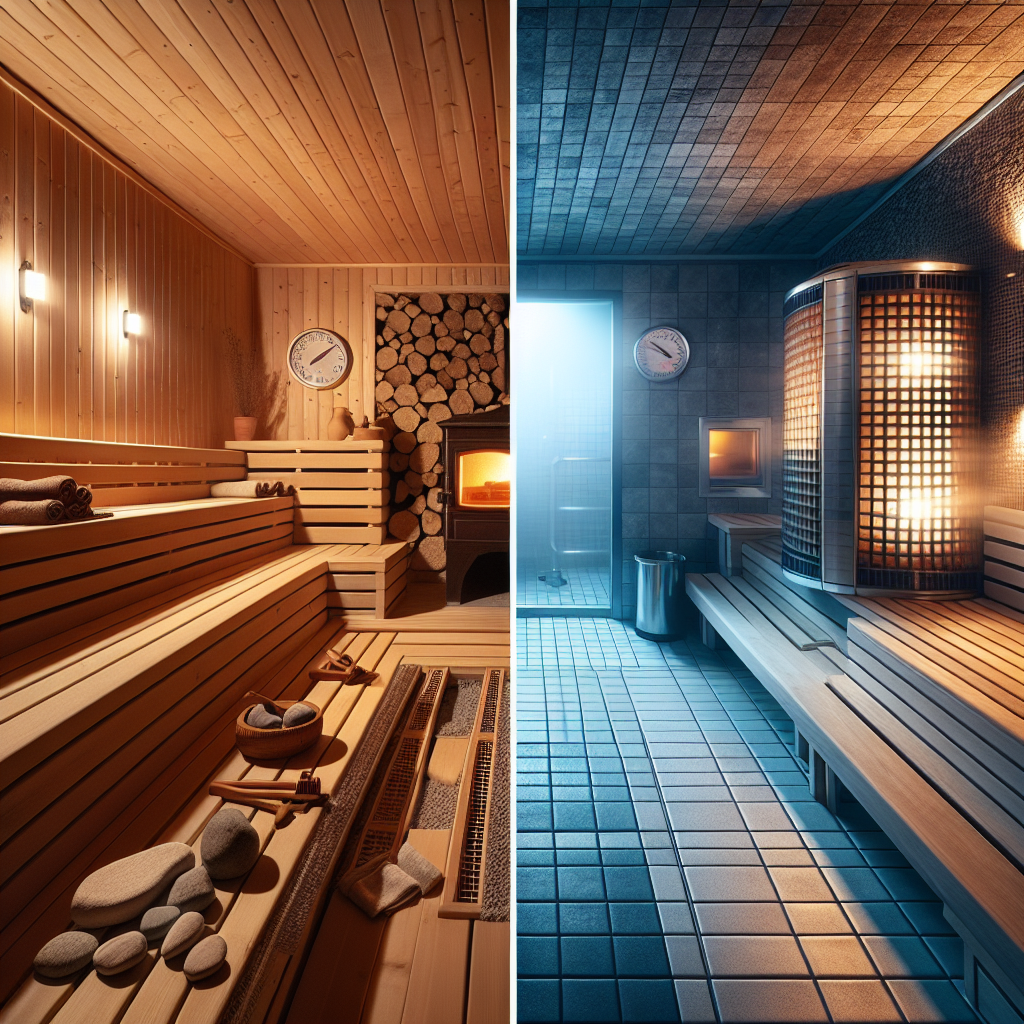Have you ever wondered what sets a sauna apart from a steam bath? While both spaces are designed to provide relaxation and promote wellness, their methods and effects differ significantly. A sauna, traditionally originating from Finland, utilizes dry heat to warm up the space, whereas a steam bath relies on moist, heated steam. Understanding the contrasting benefits and experiences each option offers can help you choose the perfect retreat for your wellbeing journey.
Difference between a sauna and a steam bath
When it comes to relaxation and cleansing, saunas and steam baths are popular choices. While they both offer a similar experience of heat therapy, there are some key differences between the two. In this article, we will explore these differences under various aspects such as temperature, humidity, heating source, construction, benefits, health considerations, use of water, suitability for different purposes, maintenance, and cultural significance.
Temperature
One of the primary distinctions between a sauna and a steam bath is the temperature. In a sauna, the temperature typically ranges from 160 to 200 degrees Fahrenheit (70 to 95 degrees Celsius). The dry heat in a sauna induces sweating, which helps to eliminate toxins from the body. On the other hand, a steam bath operates at a lower temperature, usually around 110 to 120 degrees Fahrenheit (43 to 49 degrees Celsius). The moist heat in a steam bath creates a soothing and relaxing environment, perfect for unwinding and revitalizing the body.
Humidity
The level of humidity is another factor that sets saunas and steam baths apart. In a sauna, the humidity remains relatively low, usually under 20%. This low humidity allows for a dry heat experience, which can be beneficial for those who prefer intense sweat sessions. In contrast, steam baths have high humidity levels ranging from 100% to 115%. This high humidity creates a thick steam in the air, enveloping your body and providing a more moisturizing and hydrating effect on the skin.

Heating source
The heating source used in saunas and steam baths also differs. Saunas typically use a traditional heating method involving heated rocks. These rocks are heated to a high temperature, typically by an electric or wood-burning stove or a gas heater. Water can be poured onto the rocks to create a burst of steam and increase the humidity temporarily. On the other hand, steam baths utilize a steam generator that produces steam by heating water. This steam is then released into the enclosure, creating the desired moist heat environment.
Construction
The construction of saunas and steam baths differs as well. Saunas are traditionally made of wood, often cedar or pine, to withstand the high temperatures. The walls, ceiling, and benches are all constructed with heat-resistant materials. Steam baths, on the other hand, are typically made of materials that can withstand high levels of moisture, such as porcelain, tile, or glass. The enclosure of a steam bath is usually sealed to prevent the steam from escaping, ensuring maximum humidity inside the chamber.

Benefits
Both saunas and steam baths provide numerous benefits for physical and mental well-being. Saunas are known for their ability to improve blood circulation, relieve muscle tension, reduce stress levels, and promote overall relaxation. The dry heat in a sauna can also help with respiratory problems and detoxification. On the other hand, steam baths are renowned for their hydrating effect on the skin. The moist heat helps to cleanse and rejuvenate the skin while potentially alleviating respiratory conditions like asthma and allergies.
Health considerations
While saunas and steam baths offer various health benefits, there are certain considerations to keep in mind. Saunas, with their higher temperatures, may not be suitable for individuals with certain health conditions, such as cardiovascular issues or pregnancy. It is always recommended to consult with a healthcare professional before using a sauna. Steam baths, with their high humidity, may not be suitable for individuals with respiratory conditions triggered by humidity. As with saunas, it is essential to seek medical advice before using a steam bath, especially for those with underlying health concerns.
Use of water
Water plays a significant role in both saunas and steam baths. In a sauna, water is used to create a burst of steam when poured onto the heated rocks. This practice, known as “löyly,” increases the humidity momentarily and promotes a refreshing feeling. In steam baths, water is heated to produce steam, which is then released into the enclosure. The steam provides the primary source of moisture and humidity in a steam bath, creating a more relaxing and rejuvenating experience.
Suitability for different purposes
Due to their distinct characteristics, saunas and steam baths are often more suitable for specific purposes. Saunas, with their dry heat and intense sweating, are excellent for promoting detoxification and relaxation. They are also favored by athletes for relieving muscle soreness and enhancing post-workout recovery. On the other hand, steam baths, with their moisturizing and hydrating properties, are more commonly associated with spa treatments and skincare. The high humidity in steam baths can help to nourish and revitalize the skin, making them a popular choice for beauty and wellness enthusiasts.
Maintenance
Maintenance requirements also vary between saunas and steam baths. Saunas, typically constructed with wood, require regular cleaning, sealing, and occasional sanding to maintain their appearance and prevent moisture damage. It is also necessary to regularly replace the rocks used for heating. Steam baths, with their higher humidity levels, require meticulous cleaning to prevent the growth of mold or mildew. Regular checks of the steam generator and ventilation systems are essential to ensure their proper functioning.
Cultural significance
Saunas and steam baths have significant cultural significance in different parts of the world. Saunas, originating from Finland, are deeply ingrained in Finnish culture. They are considered a place for relaxation, socializing, and even conducting business meetings. In other countries like Russia, the banya or Russian steam bath holds similar cultural importance. Steam baths, on the other hand, can be traced back to ancient Roman and Turkish civilizations. The Turkish hammams and Roman thermae were not only places for bathing but also served as social gathering spots. Today, these cultural traditions continue to be celebrated and valued around the world.
In conclusion, while both saunas and steam baths provide soothing heat therapy experiences, they differ significantly in terms of temperature, humidity, heating source, construction, benefits, health considerations, use of water, suitability for different purposes, maintenance, and cultural significance. Whether you prefer the dry heat of a sauna or the moist heat of a steam bath, both options offer unique health and relaxation benefits, allowing you to unwind and rejuvenate in your preferred environment.

